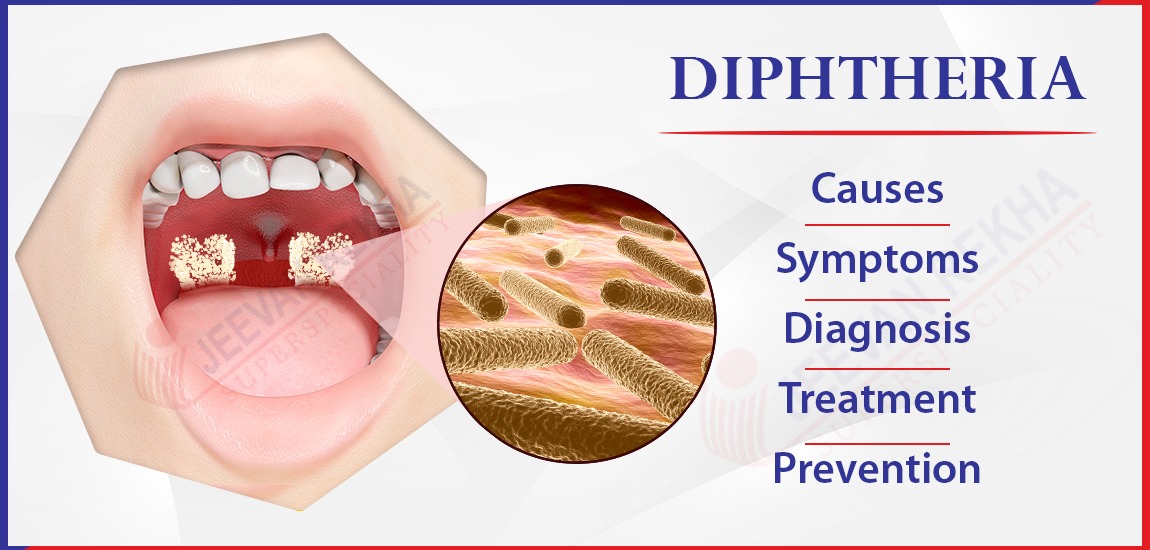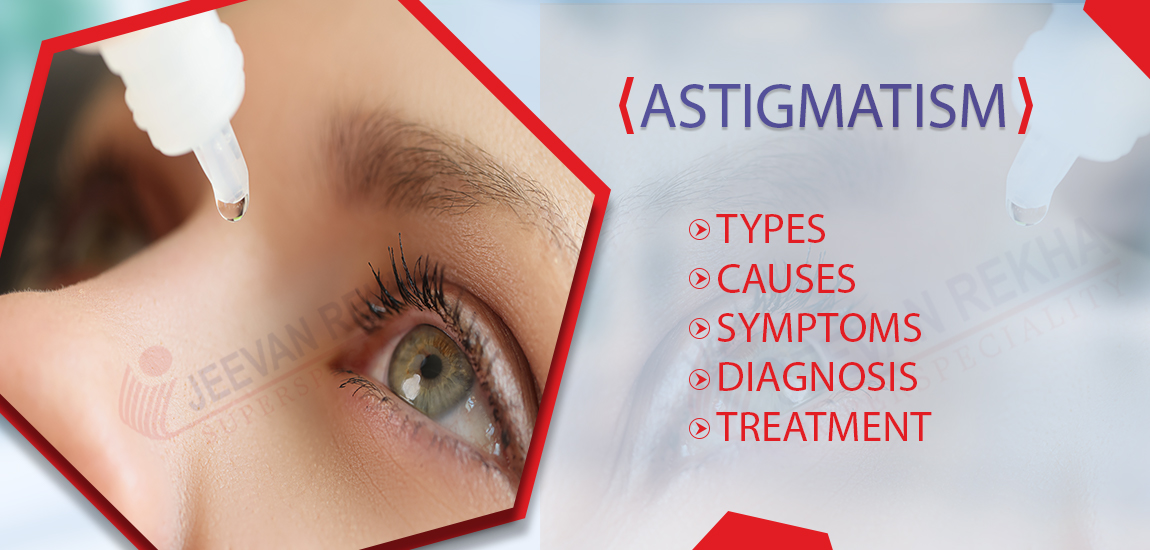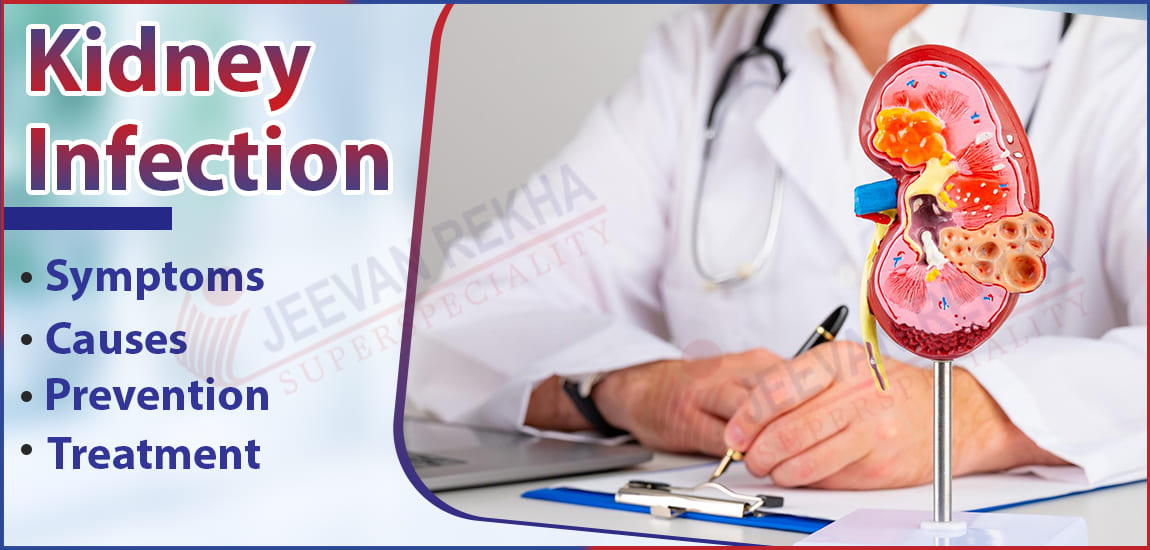
- By JRSH Admin
- In Health and Tips,
- Posted September 28, 2023
Diphtheria: Causes, Symptoms, Diagnosis, Treatment & Prevention
What is Diphtheria?
A bacterium known as Corynebacterium diphtheriae is the source of the infectious disease diphtheria. The bacterium releases a toxin that makes your throat thick with gray tissue and impairs breathing and swallowing.
People who have diphtheria may also develop skin sores in hotter climates that do not heal and may even be covered in grey tissue. When people live in crowded and unhealthy conditions, the condition known as cutaneous diphtheria can also occur occasionally in the United States.
Causes of Diphtheria
It primarily affects the respiratory system but can also affect other mucous membranes and occasionally the skin. The main cause of diphtheria is the transmission of this bacterium from an infected person to others. Here are the key causes and factors related to diphtheria:
- Corynebacterium diphtheriae: The primary cause of diphtheria is the bacterium Corynebacterium diphtheriae. This bacterium produces a toxin that can lead to the characteristic symptoms of the disease.
- Human-to-Human Transmission: Diphtheria is primarily spread through respiratory droplets when an infected person coughs, sneezes, or talks. Close contact with an infected person can lead to the transmission of the bacterium.
- Contaminated Objects: Diphtheria bacteria can also survive on surfaces for a period, and touching contaminated objects or surfaces and then touching one's mouth, nose, or eyes can lead to infection.
- Low Vaccination Rates: Historically, diphtheria was a major public health concern, but widespread vaccination efforts have significantly reduced its incidence in many parts of the world. Low vaccination rates or lack of access to vaccines can contribute to diphtheria outbreaks.
- Crowded and Unsanitary Conditions: Diphtheria is more likely to spread in overcrowded and unsanitary living conditions where close contact among individuals is common.
- Lack of Boosters: Immunity to diphtheria can wane over time, and booster shots are required to maintain protection. Failure to receive booster shots can increase the risk of infection in previously vaccinated individuals.
- Weakened Immune System: People with weakened immune systems due to underlying medical conditions, malnutrition, or certain medications may be more susceptible to diphtheria.
- Travel to Endemic Areas: Traveling to areas where diphtheria is more common, especially in countries with low vaccination rates, can increase the risk of exposure to the bacterium.
Also read: 10 Best Foods Should Try for Healthy Hair, Skin, and Nails
Symptoms of Diphtheria
Diphtheria can cause a range of symptoms, but the key ones include:
- Sore Throat: Typically the first sign, often severe.
- Fever: Elevated body temperature.
- Difficulty Swallowing: Due to throat inflammation.
- Grayish-White Membrane: Forms on the throat or tonsils.
- Swollen Neck Glands: Enlarged lymph nodes in the neck.
- Hoarseness and Breathing Difficulties: Can occur in severe cases.
- Weakness and Fatigue: Generalized weakness and tiredness.
These symptoms can vary in severity, and complications can arise if the infection is not promptly treated, including heart and nerve problems. Immediate medical attention is essential if diphtheria is suspected.
Diagnosis of Diphtheria
The diagnosis of diphtheria involves a combination of clinical evaluation, laboratory tests, and the patient's medical history. Here are the key steps involved in diagnosing diphtheria:
- Clinical Examination: A healthcare provider will start by conducting a physical examination of the patient. They will look for characteristic signs and symptoms of diphtheria, such as a sore throat, fever, the presence of a grayish-white membrane in the throat, and swollen neck glands.
- Medical History: The healthcare provider will ask about the patient's recent medical history, including any recent travel to areas where diphtheria is more common and their vaccination status. Knowing if the patient has had a recent tetanus-diphtheria (Td) or tetanus-diphtheria-acellular pertussis (Tdap) vaccine is important.
- Laboratory Tests: To confirm the diagnosis, a sample of the grayish-white membrane from the throat or other affected areas may be collected. This sample is sent to a laboratory for culture and testing. In addition to identifying the presence of Corynebacterium diphtheriae, laboratory tests can determine whether the bacterium is producing the diphtheria toxin.
- Throat Swab: A throat swab is commonly used to collect a sample from the affected area. This swab is then cultured to identify the bacterium.
- Toxin Testing: To confirm the presence of the diphtheria toxin, specialized tests, such as the Elek test or polymerase chain reaction (PCR) assays, may be performed on the samples collected.
- Blood Examinations: Blood examinations may be carried out to look for indicators of infection, such as a raised white blood cell count.
- Chest X-ray: In severe cases or when there are breathing difficulties, a chest X-ray may be done to assess the condition of the airway and lungs.
Also read: Bacteremia: Symptoms, Causes, Diagnosis, and Treatment
Risk Factors of Diphtheria
Risk factors for diphtheria include:
- Lack of Vaccination: Not being vaccinated or under-vaccinated increases the risk.
- Travel to Endemic Areas: Traveling to regions with low vaccination rates and diphtheria prevalence.
- Close Contact: Living in crowded or unsanitary conditions or close contact with infected individuals.
- Weakened Immune System: Having a compromised immune system due to illness, malnutrition, or medication.
- Age: Diphtheria is more common in children under 5 and adults over 60.
- Incomplete Boosters: Please receive recommended booster shots.
- Unvaccinated Populations: Living in areas with low vaccination rates and inadequate herd immunity.
Complications of Diphtheria
Complications of diphtheria can include:
- Airway Obstruction: Swelling and membrane formation in the throat can block the airway, leading to breathing difficulties.
- Heart Problems: Diphtheria toxin can damage the heart muscle, causing myocarditis and potentially heart failure.
- Nerve Damage: Neurological complications, including paralysis, can occur due to the toxin's effects.
- Spread to Other Organs: Diphtheria can spread to other organs, causing systemic illness.
- Secondary Infections: Secondary bacterial infections can arise due to weakened immunity.
- Death: Without timely treatment, diphtheria can be fatal, especially in severe cases.
Treatment of Diphtheria
The treatment of diphtheria is a medical emergency and typically involves a combination of antitoxin administration, antibiotics, and supportive care. Here's an overview of the treatment for diphtheria:
- Diphtheria Antitoxin (DAT): The most critical and immediate step in treating diphtheria is administering diphtheria antitoxin, also known as DAT. DAT is a specific antibody that neutralizes the diphtheria toxin circulating in the patient's bloodstream. It does not reverse the damage already done but prevents further progression of the toxin's effects. DAT should be administered as soon as diphtheria is suspected, without waiting for laboratory confirmation, because early treatment is crucial.
- Antibiotics: Antibiotics are prescribed to kill the Corynebacterium diphtheriae bacteria and stop the production of the diphtheria toxin. Penicillin or erythromycin is typically used. Antibiotics should be administered even if DAT has been given because they target the bacteria.
- Isolation: Patients with suspected or confirmed diphtheria should be isolated to prevent the spread of the disease to others.
- Supportive Care: Depending on the severity of the disease, supportive care may be necessary. This can include measures to manage airway obstruction, such as intubation or tracheostomy in severe cases. Patients may also need intravenous fluids, pain relief, and nutritional support.
- Vaccination and Boosters: Patients who recover from diphtheria should receive diphtheria toxoid-containing vaccines (e.g., Tdap or Td) if they haven't already. It's crucial to complete the vaccination series and receive booster shots to prevent future infections.
- Contact Tracing and Preventive Measures: Public health authorities should be notified to conduct contact tracing and ensure that individuals who have been in close contact with the infected person are identified and receive appropriate prophylactic measures or treatment.
Prevention of Diphtheria
Prevention of diphtheria involves vaccination, booster shots, and good hygiene:
- Vaccination: Receive diphtheria toxoid-containing vaccines (e.g., DTaP for children, Tdap for adolescents/adults). Complete the recommended vaccination schedule.
- Booster Shots: Get regular booster shots (e.g., Td or Tdap every 10 years) to maintain immunity.
- Herd Immunity: Encourage high vaccination rates in the community to protect those who can't be vaccinated.
- Hygiene: Practice good hygiene, including handwashing and covering coughs and sneezes, to reduce the bacterium's spread.
- Travel Precautions: If traveling to areas with diphtheria risks, ensure vaccination is up to date and take precautions to avoid exposure.
Tags
Blog Search
Latest Posts
-
Is Coconut Water Safe During Pregnancy? Benefits, Risks & Myths
January 08, 2026 -
Dark Circles Under The Eyes: Causes, Home Remedies and Treatments
December 21, 2025 -
बर्ड फ्लू के लक्षण, कारण, उपचार और बचाव के उपाय जानें
December 04, 2025 -
Best Diet Plan for Menopause Weight Management
November 25, 2025 -
Pulmonary Fibrosis Treatment: Understanding Lung Scarring and Breathing Problems
November 21, 2025




